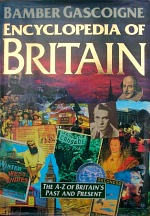| |

More than 5000 entries on the history, culture and life of Britain (published in 1993 by Macmillan, now out of print)
|
Aberdeen
|
|
|
(217,000 in 1991)
City and seaport on the northeast coast of Scotland; administrative centre of the Grampian *region. Lying between the mouths of the Don and the Dee (its name means 'mouth of the Dee' in Gaelic), it is known as the 'granite city' from the stone of which it is largely built. It has long been Scotland's largest fishing port, and in recent decades has become the support centre for the oil-drilling operations in the North Sea.
|
|
|
|
|
The city developed from two separate settlements. One, known as Old Aberdeen, grew up around St Machar's cathedral in the north; beyond it is the famous *Brig o' Balgownie. The other district, commercial Aberdeen, developed in the south, round the harbour on the Dee. Castlegate, with its Mercat Cross (market cross) of 1686, was the original centre of this area; the nearby Town House (1868) incorporates part of the previous municipal building, the 17C Tolbooth.
|
|
|
|
|
Two of the earliest houses, both once belonging to provosts of the city, are now museums. Provost Skene's House (c.1545) displays domestic items in rooms with period furniture; and Provost Ross's House (1593) is the home of the Maritime Museum. The main thoroughfare of modern Aberdeen, Union Street, running southwest from Castlegate, was begun in 1800 and was named after the *Union with Ireland.
|
|
|
|
|
Aberdeen is a city of three cathedrals. St Machar's (14–15C, a ruin except for the nave which remains in use as a parish church) is named after a possibly legendary figure, the supposed founder of the Celtic Christian settlement around which Old Aberdeen grew up. St Andrew's Cathedral (opened 1814) is of particular interest as the mother cathedral of the Episcopal church of the USA. In newly independent America the notion that the English monarch was head of the Anglican church was offensive to many; so an American cleric, Samuel Seabury, was secretly consecrated by three bishops in Aberdeen and became the first Anglican bishop to owe no allegiance to the crown. St Mary's (1856–69) is the Roman Catholic cathedral.
|
|
|
|
|
The Art Gallery and Museum, founded in 1885, has been largely shaped by an unusual restriction. In 1900 a local granite merchant, Alexander Macdonald, bequeathed his collection and a large sum of money with the proviso that it must be spent on paintings not more than 25 years old. The result is an excellent collection of British sculpture and painting.
|
|
|
|
|
The university of Aberdeen was formed in 1860 by the merging of King's College (one of the oldest university colleges in Scotland, founded in 1494) and Marischal College (1593). Marischal's superb granite façade, with its Gothic pinnacles, was added in 1906.
|
|
|
|